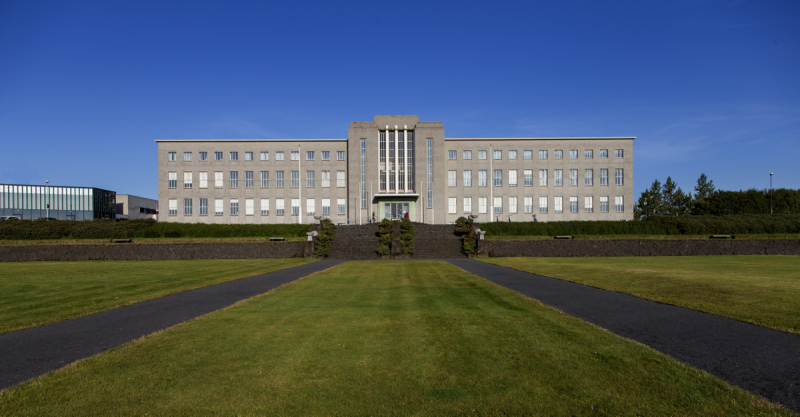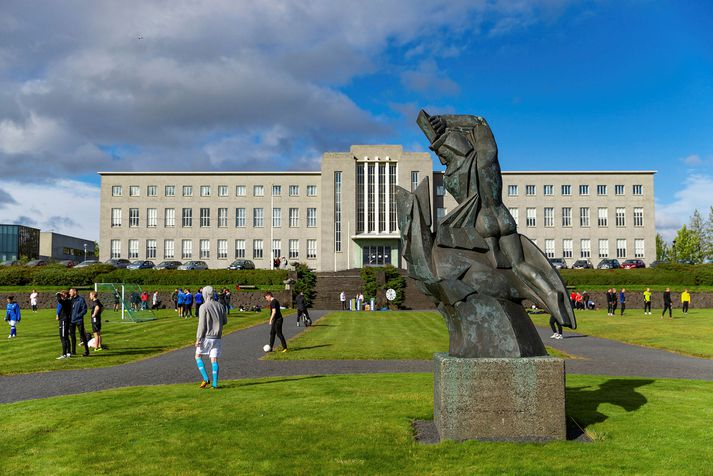Háskóli Íslands

Top 1 in Top 7 Best Universities In Iceland
Háskóli Íslands (University of Iceland) was founded in 1911 and is a non-profit public higher-education institution located in the urban setting of Reykjavik, Capital Region. Háskóli slands (HI/UI) is a large coeducational Icelandic higher education institution that is officially recognized by the Mennta- og menningarmálaráuneyti (Ministry of Education, Science, and Culture of Iceland). It has steadily developed from a tiny government servants' school to a contemporary comprehensive university, with approximately 14,000 students enrolled in twenty-five faculties. In the social sciences, humanities, law, medicine, natural sciences, engineering, and teacher education, teaching and research are carried out. It has a campus in central Reykjavk, centered on Suurgata street, with auxiliary facilities in the surrounding neighborhood and in the countryside.
On June 17, 1911, the Alingi established the University of Iceland, which merged three previous post-secondary institutions: Prestaskólinn, Laeknaskólinn, and Lagaskólinn, which taught theology, medicine, and law, respectively. The first session of the elected assembly of Althingi in 1845 saw the demand for a national Icelandic university. At the time, Icelandic nationalist leaders petitioned Denmark to establish a "national school" to accomplish cultural and material growth while also ensuring that the education received by Icelanders was sufficiently national in nature.
There has been a lot of reorganization in recent years. The institution was split into five different schools in 2008. At the same time, the Iceland University of Education and the University of Iceland combined to form the School of Education. Increased competition from nearby institutions has prompted the university to significantly strengthen its previously thought useless marketing initiatives. In numerous areas of study, Háskóli Íslands (HI/UI) offers courses and programs leading to officially recognized higher education degrees like as pre-bachelor degrees (i.e. certificates, diplomas, associate or foundation degrees), bachelor degrees, master degrees, and doctorate degrees.
This 109-year-old Icelandic university has a strict admission procedure based on students' previous academic records and ratings. With an admittance rate of 80-90 percent, this Icelandic higher education institution is one of the least selective in the country. Students from all around the world are welcome to apply for admission. Students can take advantage of a library, dormitories, sports facilities, financial aid and/or scholarships, study abroad and exchange programs, online courses and distance learning possibilities, as well as administrative services at HI/UI.
The Rector and 10 additional members, including two students and two members authorized by the University Forum, make up the University Council, which is the highest administrative authority within the university. The Rector, faculty heads, and various domestic representatives make up the University Forum. It has no executive powers, but collaborates with the Council on the university's general plan. Deans oversee the five academic schools and their faculties, which have significant power over curricula and day-to-day management.
For the first time in 2011, Times Higher Education included the University of Iceland in its rankings, placing it in the global range of 276-300. It had risen to the 251-275 band on the same list the following year. The university is currently ranked among the top 200 to 250 universities in the world by the Times. Academic Ranking of World Universities (ARWU) ranked it in the 401-500 range globally in 2017.
Name: University of Iceland
Acronym: HI/UI
Founded: 1911
Colours: Blue and white
Website: https://www.hi.is/
Country rank: 1
World rank: 726








